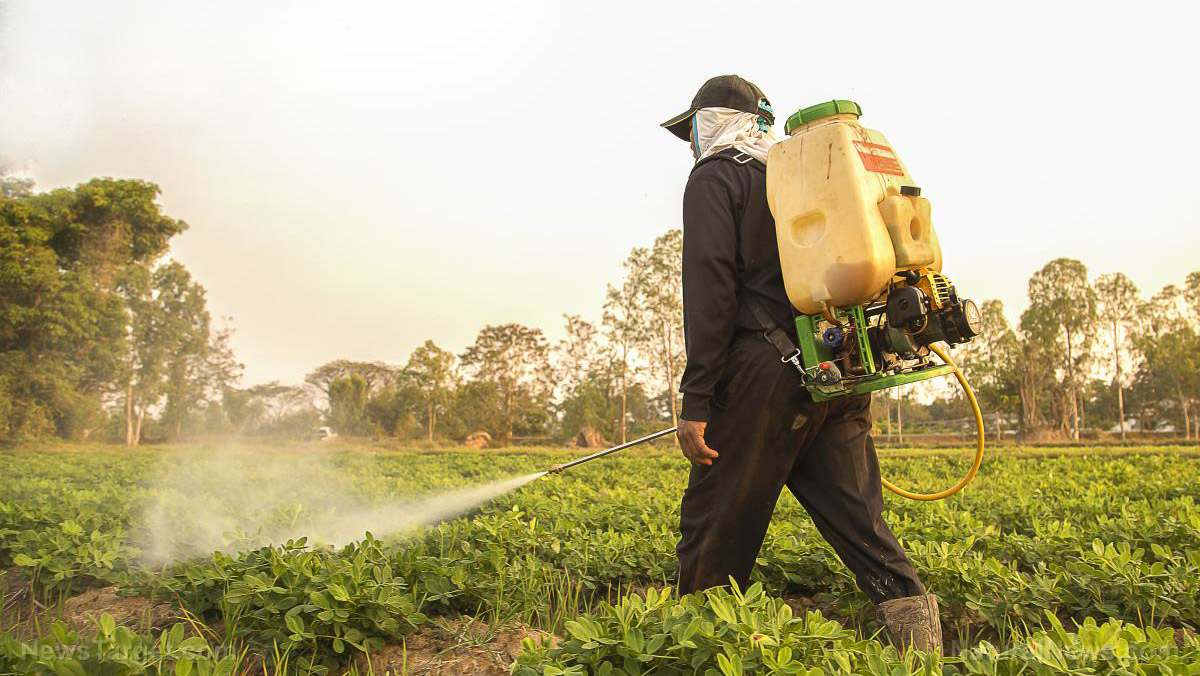Quebec is restricting use of pesticides that harm fish, bird and bee populations
03/13/2018 / By Edsel Cook

While it hasn’t gone as far as adopting a total ban, Quebec has imposed significant restrictions on the use of Atrazine, bee-killing neonicotinoids, and other dangerous pesticides, reported a Global News article.
“It’s with a lot of pride that I’m going to proceed with the announcement about these important rules,” declared Isabelle Melançon, Environment Minister for the local government of Quebec.
During a visit to a honey factory near Quebec City, Melançon announced a limited ban on the herbicide Atrazine and the pesticides Chlorpyrifos, clothianidin, imidacloprid, and thiamethoxam.
The use of these chemicals are no longer allowed in the tending of residential and commercial lawns, which count as personal usage.
Agricultural producers will need clearance from an agronomist with the Ordre des agronomes du Quebec (OAQ) if they wish to use any of those five banned pesticides. They will also be compelled to keep a registry of the pesticides they do use.
Furthermore, the Quebec environmental ministry has also banned the use of treated seeds that got dusted with herbicide before they were packaged.
Melançon explained to the bee-keepers in attendance that the partial ban struck a happy balance between environmental preservation and ensuring economic growth. (Related: Pesticide safety: Flawed risk assessment tests were driven by too much industry influence.)
She also promised that Canada would protect its CAD $2 billion bee-keeping industry, given that honeybees are highly sensitive to pesticides.
Pesticides poison humans and trigger sex changes in frogs
Atrazine, Chlorpyrifos, clothianidin, imidacloprid, and thiamethoxam are considered to be the most toxic pesticides used in Quebec.
Atrazine can contaminate ground water and cause numerous ill effects for humans and animals alike. Male frogs exposed to the pesticide will change sex into female frogs.
Chlorpyrifos is an organophosphorous insecticide that is notoriously toxic to birds and mammals. Like Atrazine, it can contaminate water.
The last three are neonicotinoids, nicotine-like agricultural insecticides that are considered heavily responsible for the drastic decrease of honeybee populations in the U.S.
Bees are not the only creatures at risk from these chemicals. Every year, the Quebec Anti-Poison Center handles 1,800 calls for pesticide-related poisoning.
The Quebec environment ministry had also discovered the presence of dozens of pesticides in nearly half of the streams and rivers that course through the province.
“It’s urgent that we act on this,” urged Louise Henault-Ethier of local environmental group David Suzuki Foundation.
Given what is known of Atrazine’s ill effects on the human hormone system, Henault-Ethier urged the Government of Canada to follow in Europe’s lead and completely ban it and other toxic pesticides at the federal level.
“Studies are on their way that might end up in a complete ban of these substances. For now, what Quebec is doing is one step in the right direction,” she affirmed.
Farmers protest additional red tape, claim they don’t use a lot of pesticides
Local farmers are less than happy with the stringent restrictions on pesticide use. They believe the provincial government is adding unnecessary complications to their livelihoods by forcing them to keep track of their pesticide purchases and usage.
According to William Van Tessel, a canola farmer and Vice President of Producteurs de grains, farmers use minimal amounts of pesticide because the chemicals are expensive.
He also argued for the exclusion of treated seeds from the ban. Van Tessel believed that farmers will end up using more pesticide if they were forced to resort to planting untreated seeds.
“Some years I don’t use treated seeds in canola and then I have to spray three or four times,” he cited from his own experience.
Visit Atrazine.News to stay informed about the ill effects of Atrazine and other pesticides.
Sources include:
Tagged Under:



















